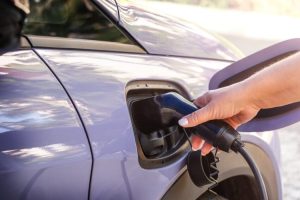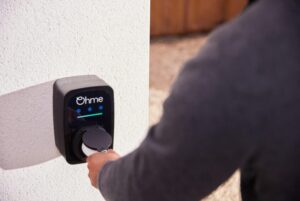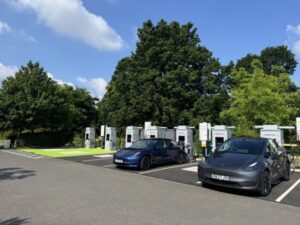ChargePoint operators face potential roadside sign restrictions under new Department for Transport guidelines that could block signposting for the UK’s largest charging hubs.
According to the Times, proposed DfT rules would prevent most major ultra-rapid charging locations along A-roads and motorways from qualifying for official roadside signage.
The guidelines require charging hubs with 12 or more ultra-rapid devices (150kW+) to provide hot drinks and cooked food for on-site consumption. They’d also need free parking for two hours and at least 10 spaces for non-charging users.
This excludes hubs located next to fast food outlets – where many chargers operate – since the charging site itself wouldn’t provide hot food.
Industry leaders criticized the proposals as counterproductive to EV adoption.
Tom Hurst, UK country manager for Fastned, said drivers are currently “flying blind” without proper signage. He told the Times the proposals were too rigid.
They exclude the vast majority of high-quality charging sites – including those next to well-known food outlets and amenities. Signage should reflect real-world usage, not red tape.
Most UK charging hubs already sit near motorway service stations, retail outlets, or restaurants where drivers can access food and drinks.
Ginny Buckley, chief executive of advice site Electrifying, called the proposals “ridiculous.”
I don’t know a single EV driver who plans their route around whether a charging hub offers hot food and two hours of free parking – they plan around charging speed, location and cost.
The criticism highlights a disconnect between government requirements and actual driver behavior.
Government Response
The DfT said it’s working with the charging industry to develop the guidelines. Officials told the Times the proposals aim to create “clear, consistent expectations” for signposting larger EV charging hubs from major A-roads.
This marks the first time such facilities would be eligible for official roadside signage.
Zapmap data shows the UK now has more than 670 locations with at least six ultra-rapid devices. Hubs with 12 or more chargers are becoming increasingly common as EV ownership grows.
The signage debate comes as charger visibility remains crucial for building driver confidence in electric vehicles. Industry figures argue that restricting signs for major hubs could slow EV adoption by making charging infrastructure less visible to potential electric car buyers.
Many charging companies have invested heavily in sites near existing amenities, viewing proximity to food and services as a key advantage rather than requiring on-site provision.





